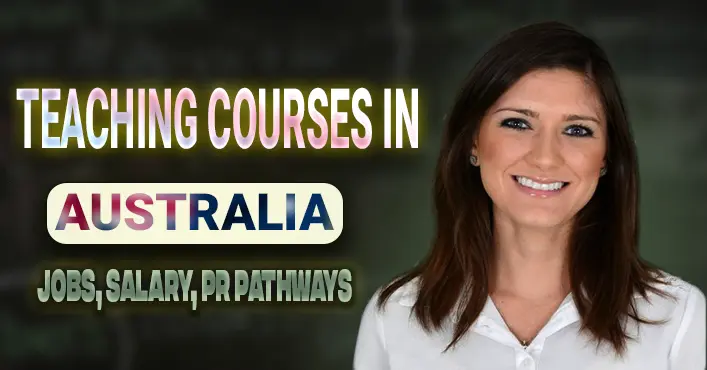
Teaching has long been regarded as a noble profession in many great civilizations. After giving in to this, Australia provides world-renowned education and facilities to train prospective teachers committed to pursuing a teaching career. Apart from academics, Australia also faces competition from other countries in terms of migration due to its culture that supports international students, fun-filled life, and good job offers. What follows now is an explanation of courses one has to take in order to become a teacher in Australia, reasons why Australia is a preferred destination for education, and job opportunities awaiting potential candidates.
Courses to Become a Teacher in Australia
To become an accredited teacher in Australia, students must undergo teaching qualifications that are accredited by the Australian Institute for Teaching and School Leadership (AITSL). There are various pathways to becoming a teacher, depending on one's education before entering a teaching course:
1. Bachelor of Education (Primary or Secondary):
A course of studies lasting four years, offered to persons fresh from school or of an equivalent status. Included with these courses are theoretical knowledge, professional placement or teaching practice, and curriculum studies. Primary teaching is geared towards preparing students to teach children from Kindy to Year 6, whereas secondary teaching caters to teaching students from Year 7 to Year 12 in some subjects like English, Science, or Mathematics.
2. Master of Teaching (Primary or Secondary):
The Master of Teaching is a postgraduate program of two years duration, full-time, for persons who already hold a non-education bachelor's degree. The degree has a component of practical teaching placements and prepares one for either primary or secondary schools, depending on the area of specialization.
3. Graduate Diploma of Education (early childhood or secondary):
Increasingly uncommon these days, some universities may still offer the Graduate Diploma for those wishing to convert into teaching but prefer a shorter route. It tends to be more fitting for e-licensing or vocational education.
4. Early Childhood Education Courses:
Typically, in order to become an early childhood teacher, one would become a Bachelor of Early Childhood Education or obtain a Diploma plus a top-up course. They focus on the developmental and learning phases of children aged 0 to 5 years.
5. Special Education Courses:
Of course, there are also courses for teachers who work with disabled students. These may be taken in conjunction with an education degree or may be recognized as postgraduate qualifications.
Besides these, the students would need to fulfil the English Language requirements and register with the teacher registration board located in the respective State or Territory.
Why Australia Is the Best Destination for Studying Education
Some of the reasons positioning Australia among the best countries for international students to study include:
1. High-Quality Education System:
2. Practical Work Experience and Placement:
4. The Multicultural Environment:
5. Post-study Work Opportunities:
6. High Living Standards:
Teacher Opportunities Across Australia
Once qualified, graduates can explore a host of different job opportunities in education. Some of these include:
1. Primary School Teacher:
Teach the basics in Maths, English, Science, and Social Studies to students aged 5 to 12 years. Teachers also develop children socially and emotionally, as well as prepare lesson plans' activities.
2. Secondary School Teacher:
For subjects taught to teenagers in high school. Teachers are in high demand with Maths, Science, and Special Education in almost every Australian state.
3. Early Childhood Educator:
Works with children in centres, preschools, and kindergartens, planning educational activities aimed at fostering children's learning and development.
4. Special Needs Teacher:
Working with children with learning disabilities or handicaps. A big demand of such teachers prevails in both governmental and private schools.
5. Educational Support Jobs:
Alternatively, graduates can serve as educational assistants, curriculum consultants, or policy officers.
Job Outlook and Salary:
The demand for teachers in Australia remains solid; it is nevertheless marginally increasing, especially in regional and remote locations. Teacher salaries average between AUD 70,000 and 110,000 per annum, depending on the experience or location. While early childhood educators earn somewhat less, they enjoy the highest job security.
Permanent Residency Pathways:
Teachers are included in the Skilled Occupation List in Australia. Hence, such teachers may apply for skilled migration visas, and thus, this may be an option for international graduates.
Conclusion:
Australia is a beautiful country for students who aim to become teachers. Australia stands for excellence in teacher education: renowned education, good support, hands-on teaching experience, and even opportunities for an enhanced future. Either consciously or unconsciously, if one envisions pathways toward becoming a passionate teaching professional in Australia involving city vibes and teaching some rural kids, then be sure this journey-from admission to the establishment of a fulfilling career-will never fall short of being rewarding.
